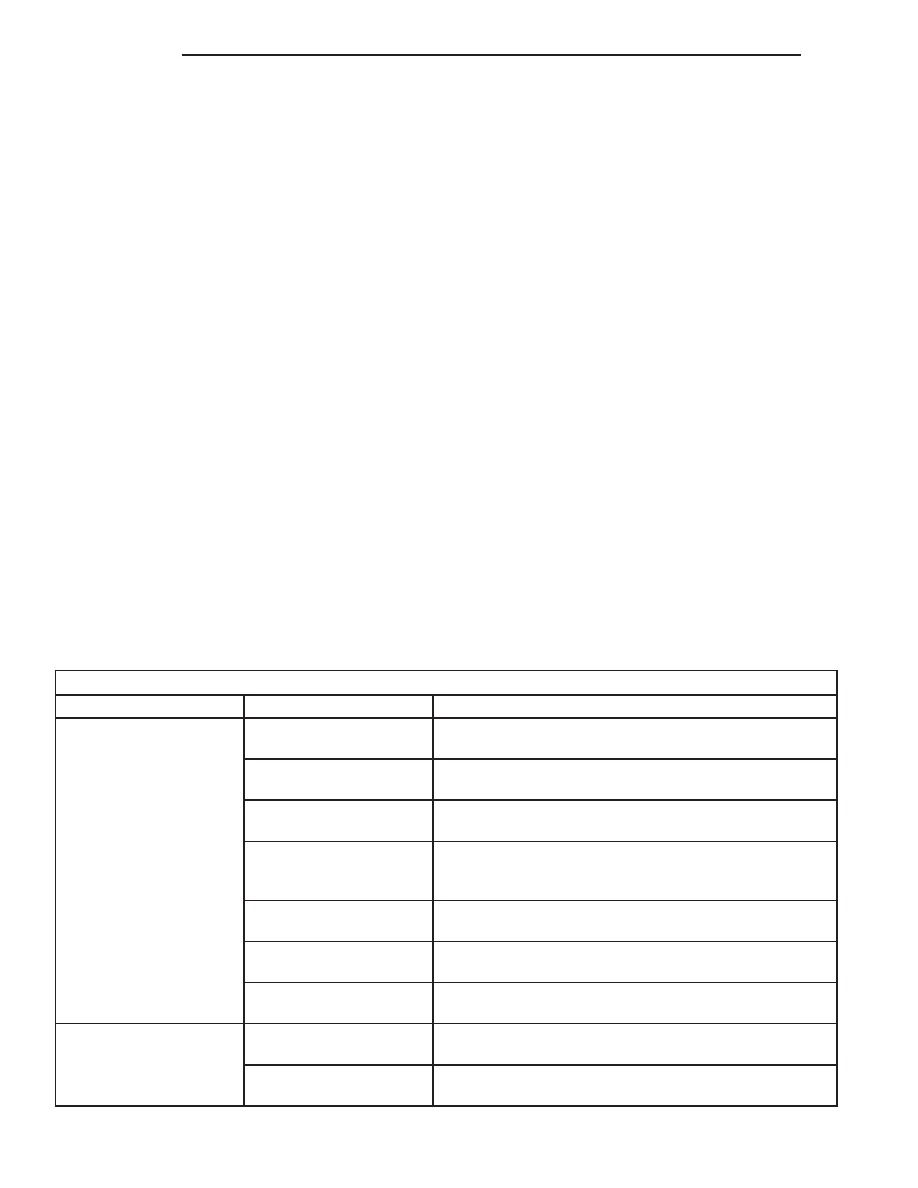Dodge Dakota (R1). Manual - part 281

nector repair procedures, details of wire harness
routing and retention, connector pin-out information
and location views for the various wire harness con-
nectors, splices and grounds. Following are general
descriptions of the remaining major components in
the standard and optional factory-installed audio sys-
tems.
OPERATION
See the owner’s manual in the vehicle glove box for
more information on the features, use and operation
of each of the available audio systems.
CENTRAL TIMER MODULE
The high-line Central Timer Module (CTM) can
also control some features of the audio system when
the vehicle is equipped with the optional RAZ radio
receiver and remote radio switches. A high-line CTM
is used on high-line versions of this vehicle. The
CTM combines the functions of a chime/buzzer mod-
ule, an intermittent wipe module, an illuminated
entry module, a remote keyless entry module, and a
vehicle theft security system module in a single unit.
The high-line CTM also controls and integrates
many of the additional electronic functions and fea-
tures included on models with this option. The RAZ
radio receiver with a remote radio switch option is
one of the features that the CTM controls. The CTM
is programmed to send switch status messages over
the J1850 data bus to control the volume, seek, and
pre-set station advance functions of the RAZ radio
receiver. The CTM monitors the status of the remote
radio switches located on the steering wheel through
a hard wired circuit. The CTM then sends the proper
switch status messages to the radio receiver. The
electronic circuitry within the radio receiver responds
to the switch status messages it receives by adjusting
the radio settings as requested.
(Refer to 8 - ELECTRICAL/ELECTRONIC CON-
TROL
MODULES/BODY
CONTROL/CENTRAL
TIMER MODUL - DESCRIPTION) for more informa-
tion on the high-line CTM. (Refer to 8 - ELECTRI-
CAL/AUDIO/REMOTE
SWITCHES
-
DESCRIPTION) for more information on this compo-
nent. In addition, radio receivers connected to the
J1850 data bus have several audio system functions
that can be diagnosed using a DRB scan tool. Refer
to the proper Diagnostic Procedures manual for more
information on DRB testing of the audio systems.
DIAGNOSIS AND TESTING - AUDIO SYSTEM
WARNING: ON VEHICLES EQUIPPED WITH AIR-
BAGS,
REFER
TO
ELECTRICAL,
RESTRAINTS
BEFORE ATTEMPTING ANY STEERING WHEEL,
STEERING
COLUMN,
OR
INSTRUMENT
PANEL
COMPONENT DIAGNOSIS OR SERVICE. FAILURE
TO TAKE THE PROPER PRECAUTIONS COULD
RESULT IN ACCIDENTAL AIRBAG DEPLOYMENT
AND POSSIBLE PERSONAL INJURY.
Audio System Diagnosis
CONDITION
POSSIBLE CAUSE
CORRECTION
NO AUDIO
1. Fuse faulty.
1. Check radio fuses in junction block. Replace faulty
fuses, if required.
2. Radio connector faulty.
2. Check for loose or corroded radio connections. Repair,
if required.
3. Wiring faulty.
3. Check for battery voltage at radio connector. Repair
wiring, if required.
4. Ground faulty.
4. Check for continuity between radio chassis and a
known good ground. There should be continuity. Repair
ground, if required.
5. Radio faulty.
5. Refer to Radio in the Diagnosis and Testing section of
this group.
6. Speakers faulty.
6. Refer to Speaker in the Diagnosis and Testing section
of this group.
7. Amplifier faulty (if
equipped).
7. Refer to Speaker in the Diagnosis and Testing section
of this group.
NO DISPLAY
1. Fuse faulty.
1. Check radio fuses in junction block. Replace faulty
fuses, if required.
2. Radio connector faulty.
2. Check for loose or corroded radio connections. Repair,
if required.
8A - 2
AUDIO
AN
AUDIO (Continued)